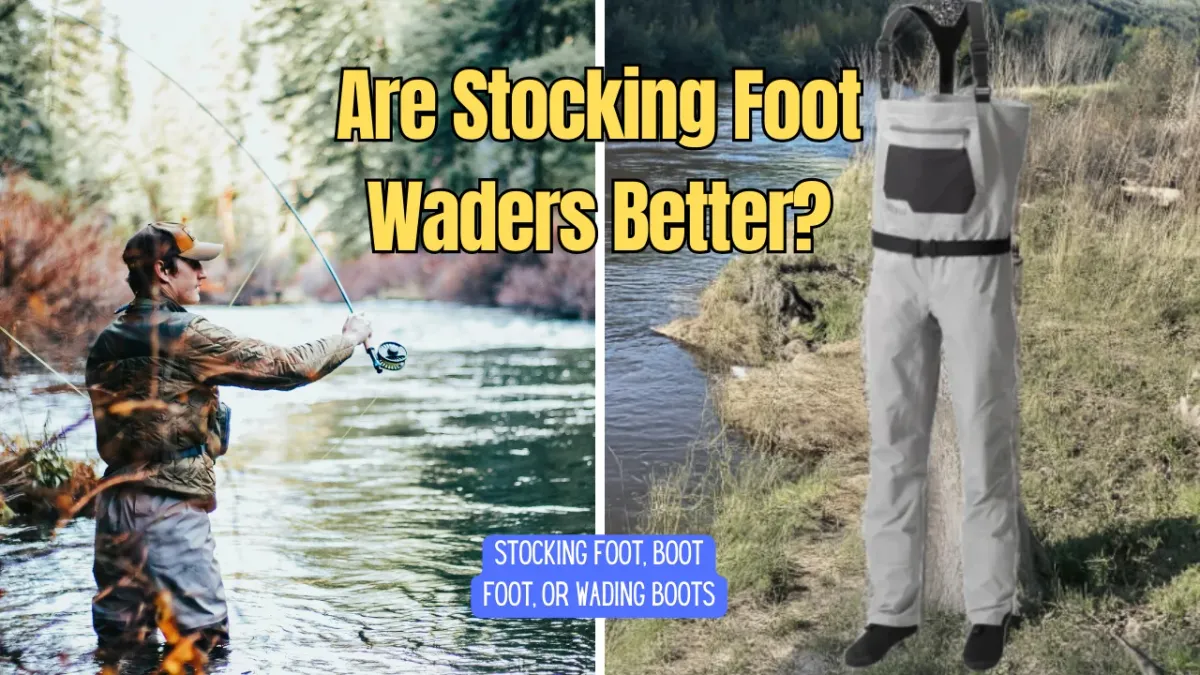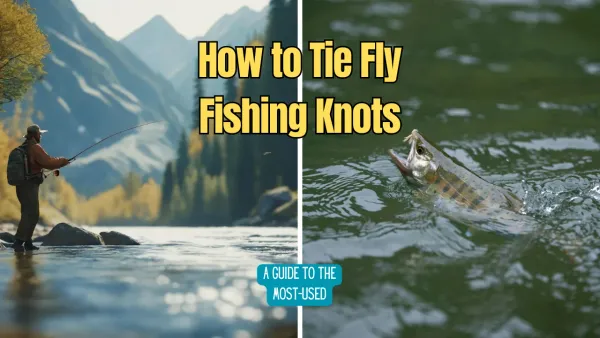Choosing the right waders can feel like finding a needle in a haystack, especially with the myriad of options available. Whether you're a seasoned angler or a newbie, understanding the different types of waders and their features is crucial. This guide will walk you through everything you need to know to make an informed decision on the best fishing waders for you.
Key Takeaways:
- Understand the Different Types of Waders: From chest waders to hip waders, each type serves a specific purpose.
- Consider the Material: Neoprene, breathable fabrics, and rubber each have their pros and cons.
- Fit and Comfort: Proper fit is essential for comfort and functionality.
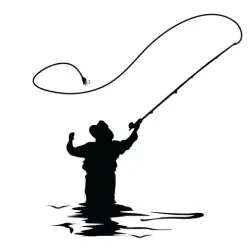
Types of Waders
When it comes to waders, there are several types to choose from, each designed for different fishing conditions and personal preferences. The most common types are chest waders, hip waders, and waist-high waders.
Chest waders are the most versatile and popular among anglers. They provide full coverage, allowing you to wade into deeper waters without getting wet. These are ideal for fly fishing and are often used in colder weather due to their excellent insulation properties.
Hip waders are perfect for shallower waters and warmer temperatures. They are easier to put on and take off compared to chest waders and are ideal for fishing in small streams or shallow rivers. However, they offer less protection and coverage, making them less suitable for deeper waters.
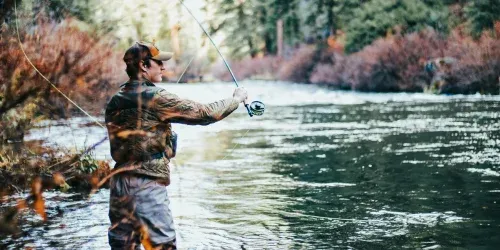
Material Matters
The material of your waders plays a significant role in their performance and comfort. The most common materials are neoprene, breathable fabrics, and rubber.
Neoprene waders are known for their excellent insulation, making them ideal for cold weather fishing. They are thicker and provide better warmth, but they can be less comfortable in warmer temperatures. Neoprene waders are also more durable and resistant to punctures.
Breathable waders are made from materials like Gore-Tex, which allow sweat and moisture to escape while keeping water out. These are perfect for warmer weather and extended periods of fishing. They are lighter and more comfortable but may not provide as much insulation as neoprene waders.
Fit and Comfort
A good fit is crucial for both comfort and functionality. Waders that are too tight can restrict movement, while those that are too loose can cause chafing and discomfort. Most manufacturers provide size charts to help you find the right fit.
When trying on waders, wear the same clothing you would typically wear while fishing. This includes layers for colder weather or lighter clothing for warmer temperatures. Pay attention to the fit around the chest, waist, and legs. The waders should allow for a full range of motion without being too baggy.
Bootfoot vs. Stockingfoot Waders
Waders come in two main styles: bootfoot and stockingfoot. Each has its advantages and disadvantages.
Bootfoot waders have boots attached to the waders, making them easier to put on and take off. They are convenient and provide good protection against cold water. However, they can be bulkier and less comfortable for long hikes to your fishing spot.
Stockingfoot waders require separate wading boots, offering more flexibility and a better fit. They are lighter and more comfortable for walking, but you will need to purchase wading boots separately. This allows you to choose boots with the right sole for your fishing conditions, such as felt soles for slippery rocks or studded soles for better traction.
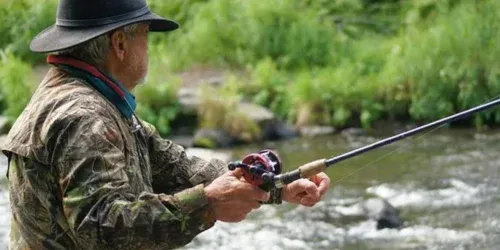
Wading Boots
Wading boots are an essential part of your fishing gear, especially if you choose stockingfoot waders. The right pair of boots can make a significant difference in your comfort and safety.
When selecting wading boots, consider the type of sole. Felt soles provide excellent traction on slippery rocks but can be banned in some areas due to their potential to spread invasive species. Rubber soles are more versatile and can be used in various conditions. For added traction, look for boots with studded soles.
Insulation and Warmth
If you plan to fish in colder weather, insulation is a key factor to consider. Neoprene waders are the go-to choice for cold weather due to their excellent insulation properties. They come in different thicknesses, typically ranging from 3mm to 5mm. A thicker neoprene wader will provide more warmth but can be less flexible.
For warmer weather, breathable waders are a better option. They allow sweat and moisture to escape, keeping you cool and comfortable. Some breathable waders also come with removable insulation layers, providing versatility for different weather conditions.
Durability and Construction
Durability is an important factor, especially if you fish in rough conditions or dense vegetation. Look for waders with reinforced knees and seams, as these areas are prone to wear and tear. Double or triple-stitched seams provide added durability and prevent leaks.
The construction of the waders also affects their durability. Welded seams are more durable than sewn seams and are less likely to leak. Some waders also come with built-in gravel guards to protect the boots and prevent debris from entering.
Additional Features
Modern waders come with various additional features that can enhance your fishing experience. Pockets are useful for storing small items like flies, tippets, and other fishing accessories. Look for waders with waterproof pockets to keep your belongings dry.
Adjustable straps and belts allow you to customize the fit of your waders for added comfort. Some waders also come with built-in suspenders, making them easier to put on and take off. Knee pads provide extra protection and comfort, especially if you spend a lot of time kneeling or crouching.
Price and Value
Waders come in a wide range of prices, from budget-friendly options to high-end models. While it can be tempting to go for the cheapest option, investing in a quality pair of waders can save you money in the long run. Cheap waders may not last as long and can be less comfortable, leading to a less enjoyable fishing experience.
Consider your budget and how often you plan to use the waders. If you fish frequently, it may be worth investing in a higher-quality pair. Look for waders with a good warranty, as this can provide peace of mind and protect your investment.
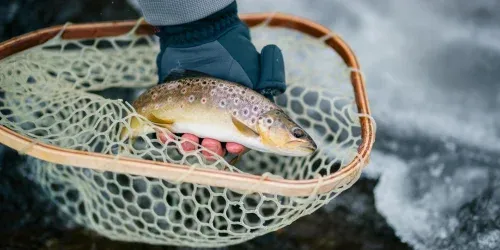
Brand and Manufacturer
The brand and manufacturer of the waders can also influence your decision. Some brands are known for their quality and durability, while others may offer more budget-friendly options. Do some research and read reviews from other anglers to get an idea of the best brands for your needs.
Popular brands like Simms, Orvis, and Patagonia are known for their high-quality waders and excellent customer service. These brands often offer a range of waders to suit different budgets and fishing conditions.
Maintenance and Care
Proper maintenance and care can extend the life of your waders and keep them in good condition. After each use, rinse your waders with fresh water to remove dirt and debris. Allow them to dry completely before storing them to prevent mold and mildew.
Store your waders in a cool, dry place away from direct sunlight. Avoid folding or creasing the waders, as this can weaken the material and cause leaks. Regularly inspect your waders for any signs of wear and tear, and repair any small holes or leaks promptly.

Summary
Choosing the right waders involves considering various factors, including the type of waders, material, fit, and additional features. By understanding your needs and preferences, you can find a pair of waders that will keep you comfortable and dry on your fishing adventures. Remember to invest in quality waders and take good care of them to ensure they last for many fishing trips to come.
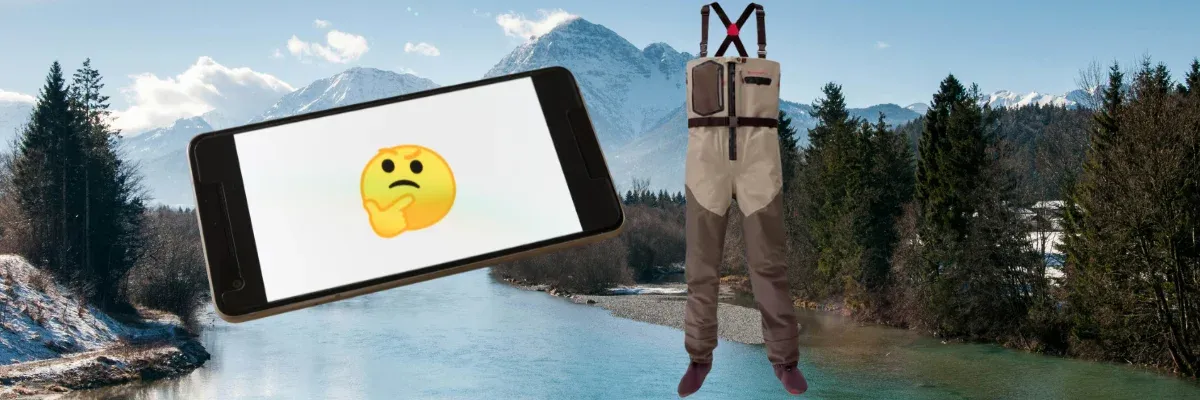
FAQs
What are the best waders for cold weather?
For cold weather, neoprene waders are the best choice due to their excellent insulation properties. Look for waders with a thickness of 3mm to 5mm for added warmth.
Can I use breathable waders in cold weather?
Yes, you can use breathable waders in cold weather, but you may need to layer up with thermal clothing underneath. Some breathable waders also come with removable insulation layers for added warmth.
How do I know what size waders to buy?
Most manufacturers provide size charts to help you find the right fit. When trying on waders, wear the same clothing you would typically wear while fishing and pay attention to the fit around the chest, waist, and legs. The waders should allow for a full range of motion without being too baggy.
Related articles:
